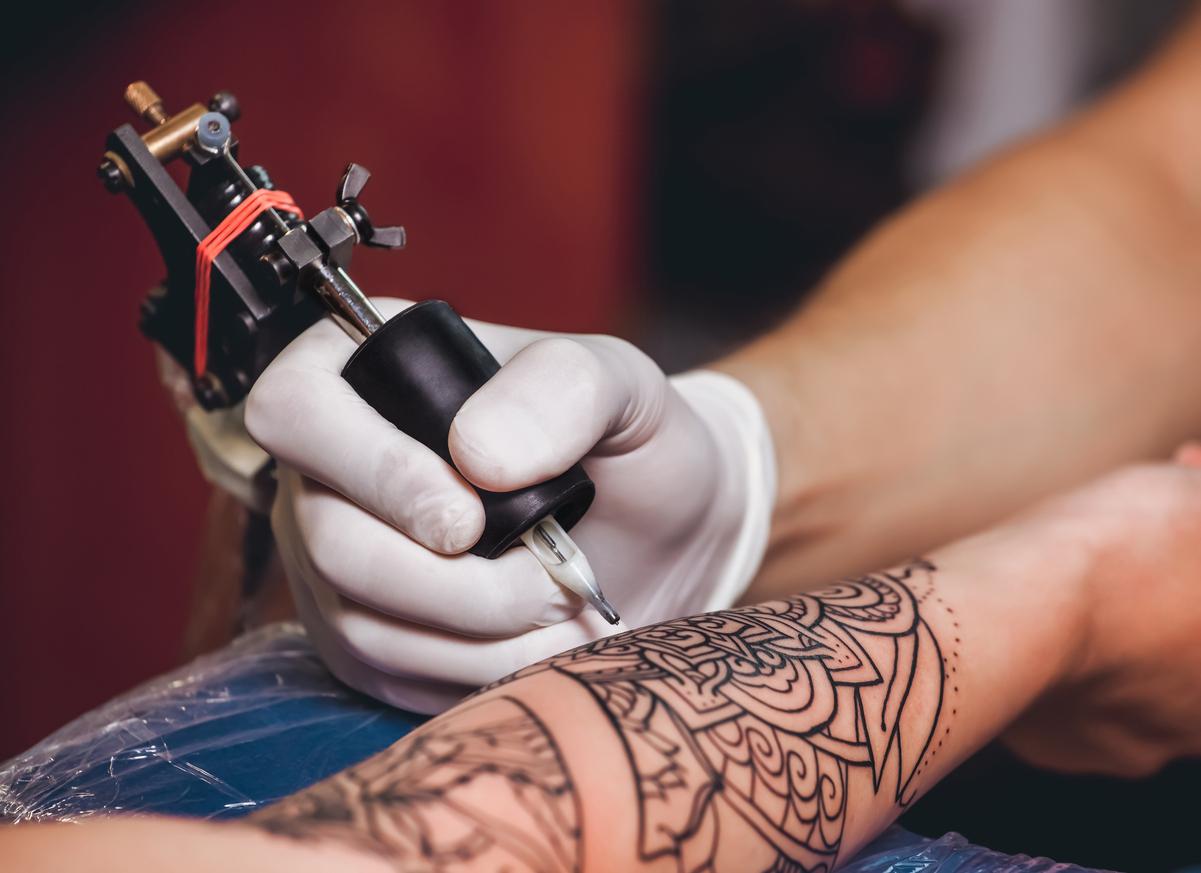The secret to tattoo persistence is finally better understood. An essential element when we know that if one in ten French people want to have a tattoo, almost as many want to have it removed. Contrary to popular belief, the ink does not stay in the same cells for “eternity”, but passes from one cell to another. A discovery which augurs well for an improvement in tattoo removal techniques.

For many years, ink particles from tattoos were believed to stain deep skin cells, “fibroblasts”, in the dermis of the skin. Recent studies had suggested that it was rather the skin’s macrophages (white blood cells located in the deep layers of the skin) that “swallowed up” the pigment in the tattoo. These cells are cleaning cells, “phagocytes”, which swallow anything foreign or damaged such as an invading agent or a piece of dying cell.
In both cases, it was assumed that the pigment-carrying cell lived forever, thus allowing the tattoo to be permanent. It is not the case anymore ! The pigment would pass from cells to cells, during their natural life and death. This augurs well for an improvement in tattoo removal procedures: tattoo removal.
Ink is captured, then released and recaptured
This hypothesis of the eternal life of cells should have been questioned for a long time since it is so far-fetched, but the explanations for the persistence of tattoos are provided by a study of INSERM. This study was carried out on an experimental model of genetically modified mice, a mouse which is capable of killing macrophages lodged in its dermis.
Over the weeks, the researchers observed that the cells so destroyed had been replaced by new macrophages derived from precursors found in the blood and obtained from the bone marrow and known as monocytes. Most importantly, these new macrophages had swallowed the pigment released by the dead cells, thus continuing the cycle of ink persistence in the skin.

Inserm photo
“We believe that when macrophages carrying tattoo pigment die in adulthood, other surrounding macrophages recapture the released pigments and dynamically ensure the stable appearance and long-term persistence of tattoos.” , explains Sandrine Henri, Inserm researcher and co-author of the study.
Deadly cells, inevitably deadly
The researchers discovered that the macrophages in the dermis were the only cells to absorb the pigment during tattooing. Despite the programmed death of these macrophages, the appearance of the tattoo did not change. The team therefore concluded that the dead macrophages locally released the pigment into the skin where, over the following weeks, this pigment was recaptured by new macrophages. This local recapture would allow the initial appearance of the tattoo to be preserved indefinitely.
No, the #tattoos are not really indelible.
https://t.co/8qGrRbuBAs pic.twitter.com/R2OAbEecQN– Inserm (@Inserm) March 7, 2018
This “capture-release-recapture” cycle of the pigment would occur continuously in tattooed skin. The researchers also transferred a piece of tattooed skin from one mouse to another and found that six weeks later most of the pigment-carrying macrophages in the tattooed skin came from the recipient animal rather than the donor animal. .
Tattooed and untattooed
While tattooing is all the rage, “tattoo removal” is a booming trend, especially in the United States. Almost a quarter of American students have one or more tattoos, and half of them seek treatment to remove it a few years later.
Not so long ago, to remove a tattoo, you had to go through surgery, often with a large scar or even skin grafting. Today, the laser is the most efficient and above all the safest. Depending on the size, location and especially the quality of the ink used, ten sessions are enough to completely erase the drawing.
The laser pulses cause skin cells to die and release and fragment their pigments which can then be transported away from the skin via the lymphatic vessels that drain it.
Improved tattoo removal
“Tattoo removal via this laser technique could probably be improved by the temporary removal of macrophages present in the tattoo area,” said the researchers from Inserm. “Thus, the fragmented particles of pigment, generated by means of the laser pulses, will not be immediately recaptured, which could increase the likelihood of them being evacuated by the lymphatic vessels. “Long and expensive, this process, to avoid the dangers, must always be done by a dermatologist.
Rite of initiation in a society that no longer has any? Affirmation of its identity and its difference? Aesthetics? Tattooing has become trendy and is now not lost on any class of the population. But we now know that tattooing is no longer eternal.
.

















